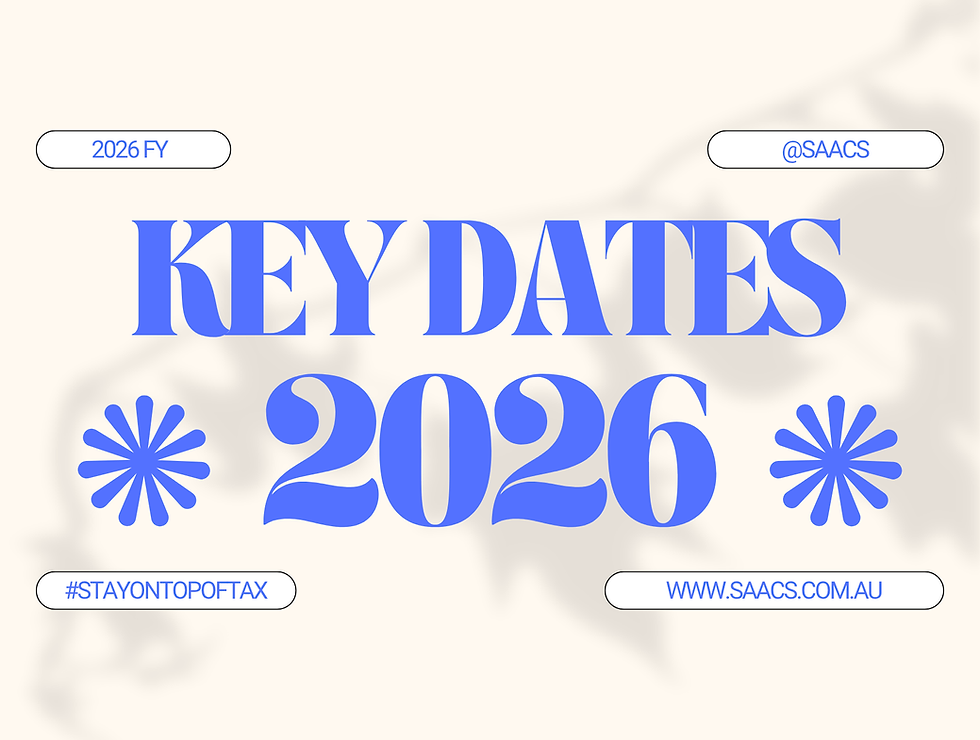Section 100A: How the ATO's New Guidelines Could Impact Your Family Trust
- The SAACS Team
- Mar 15, 2023
- 3 min read

Many Aussies, especially business owners, have used family trust structures to create wealth for years. But recently, the ATO has shifted its attention to Section 100A "Reimbursement Agreements," which could have a significant impact on the tax position of any family trust distributions caught by this section.
In December 2022, the ATO has finally released its guidelines on Section 100A, which clarified several issues and eased concerns for many people. However, it's important to note that the guidelines aren't laws and only represent the ATO's perspective on how the law applies. Clients should consult their advisor before making any decisions based on them.
What is section 100a ‘reimbursement agreement’?
Section 100A is a rule in tax legislation that aims to prevent situations where income of a trust is appointed to a lower taxed beneficiary, but the economic benefit of the distribution is provided to another individual or entity. Trust distributions caught under Section 100A generally result in the trustee paying up to 47% in taxes (before interest and penalties are imposed).
New guidance details (s.100a)
Section 100A has been around since the late 1970’s. It was historically only applied / enforced by the ATO in blatant schemes involving loss entities and circular distributions.
The new guidance hasn't resulted in a change to the existing tax rules but outlines a wider range of examples where the ATO considers Section 100A will apply. This means that more compliance activities, like audits, could occur moving forward. The ATO has narrowed its view of "acceptable" arrangements to reduce the legitimate tax planning benefits that Family Trusts receive.
Section 100a – exemption
The ATO’s updated guidance focuses primarily on trust distributions made to adult children, corporate beneficiaries, and entities with losses. The individual circumstances for each Family Trust will ultimately determine the level of risk and likelihood of a Section 100A review.
Moving forward
So, what are your options for risk management moving forward? Here are a few to consider:
1. Only distribute to Mum and Dad
This is the safest option and won't draw any unwanted attention from the ATO. No one benefits from any agreement, so it's low risk.
2. Continue to distribute to young adult beneficiaries, but hand over the money
If you're happy to give money to your children, this is a good option that also optimizes tax.
3. Charge board and current university fees
If adult beneficiaries are living at hom
e, they should pay board just like they would if they had a job. This won't result in large sums of money, but it allows for some tax benefits without actually giving the kids any money.
4. Use of bucket company
A private corporate beneficiary limits the tax rate imposed on trust income, and franked dividends can be allocated through a trust structure interposed between the bucket company and beneficiaries. However, it's important to avoid having the main trust as a shareholder in the bucket company since the ATO sees circular income flows as high-risk.
5. Be alert for the “no reimbursement agreement” argument
If you're considering making a gift or interest-free loan to someone, make sure to ask questions about the circumstances behind the plan. If it wasn't part of the trust income appointment up to two years ago and has only come up because of recent family circumstances, there may not be a reimbursement agreement.
6. If making gifts, go once and go big
It's unlikely that the ATO will overlook beneficiaries making gifts or loans year-after-year. So, if you have a strong argument to support the ordinary dealing exception, try to make it once-off and for a significant amount if possible. If you're impacted, reach out to us to determine which option is best for you and your business.
It's important to review your structures on a regular basis to ensure they continue to meet your financial objectives and align with your estate/succession arrangements. This is best undertaken as part of an annual tax planning review.
At SAACS, we can assist with reviewing your structures, keeping you up to date with changes from the ATO, and providing tax planning services that are compliant with the ever-changing Australian tax legislation landscape. If you're concerned about the impact of this new guidance on you and your trusts, please contact our office or use our website to book for a consultation.




Comments